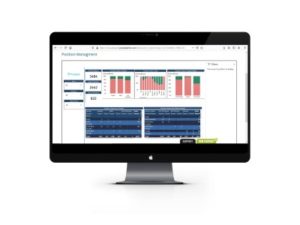‘Data analytics really positions HR to be a strategic leader’
Fewer than 30 percent of higher education institutions measure talent management performance, but those that do say it helps them demonstrate and increase the institutional value of efficient talent management.
“Data analytics really positions HR to be a strategic leader,” said Ricardo Coronado, Ph.D., Associate Vice Chancellor for Human Resources at Tarrant County College (TCC) in Fort Worth, Texas.
Ricardo and his team frequently review data to improve cross-departmental communication and drive strategic institutional improvements.
“It really helps us plan,” Ricardo explained. “We can make better decisions in terms of whether we need to redirect some of our staff or financial resources to other areas.”
This is important, Ricardo said, because “it might not be a good idea to keep doing what we’ve always been doing.”
To determine what practices and processes have opportunities for improvement, Ricardo and his team track:
- Turnover rates.
- Number of hours spent in professional development.
- Diversity and demographic data.
- And more.
 According to Heather Murray, Director of Strategic Partnerships at PeopleAdmin and former associate director of human resources at Gonzaga University in Spokane, Washington, tracking these and other key performance metrics—and using insights gained to drive continuous improvements—empowers higher education talent management teams to realize their full potential.
According to Heather Murray, Director of Strategic Partnerships at PeopleAdmin and former associate director of human resources at Gonzaga University in Spokane, Washington, tracking these and other key performance metrics—and using insights gained to drive continuous improvements—empowers higher education talent management teams to realize their full potential.
“Becoming a strategic partner in the human resources world is really about becoming more transformational and aware of what drives your organization,” she said.
But there’s only so much that talent management teams can improve on their own. That’s why Ricardo uses data to inform conversations with leadership in other departments.
“There’s a potential to be a resource to other departments,” he said.
Heather adds that serving as a resource means HR teams must understand the meaning behind the data they collect and share that information with key stakeholders in an easily understandable format.
“It’s a matter of deciphering from the data the story we are trying to tell and explaining how that affects each organization within your institution,” she said. “That helps you solidify your credibility and your role. Then, you are no longer asking to be accepted. You become sought after as an advisor, a collaborator, and a trusted partner. It facilitates a much more strategic forward-focused partnership.”